One of the most important pieces of mid-18th century Irish furniture to come on the market “in decades” is set for auction as part of Adam’s upcoming Country House Collections sale.
The two-day sale of more than 1,000 lots will take place on October 9th and 10th. The first day is a timed online sale with 281 lots, while the second will be live and online from its saleroom on St Stephen’s Green.
Viewings for the annual behemoth of a sale will take place from October 7th to 9th at Townley Hall in Drogheda.
The auction has what James O’Halloran, managing director of the house, describes as “must view” pieces in the antiques world, due to “the rarity and general superb quality of the offerings that have been attracting increasing numbers of foreign visitors and buyers”.
A middle-class millennial at a Kneecap gig: am I just cosplaying at republicanism?
What should I do if my electric car breaks down?
Matt Williams: In cynical times, savour the new coaches who want to make the world a bit better
Political stupidity of Fianna Fáil four could see Ireland end up with a bottom-of-the-barrel job in Europe
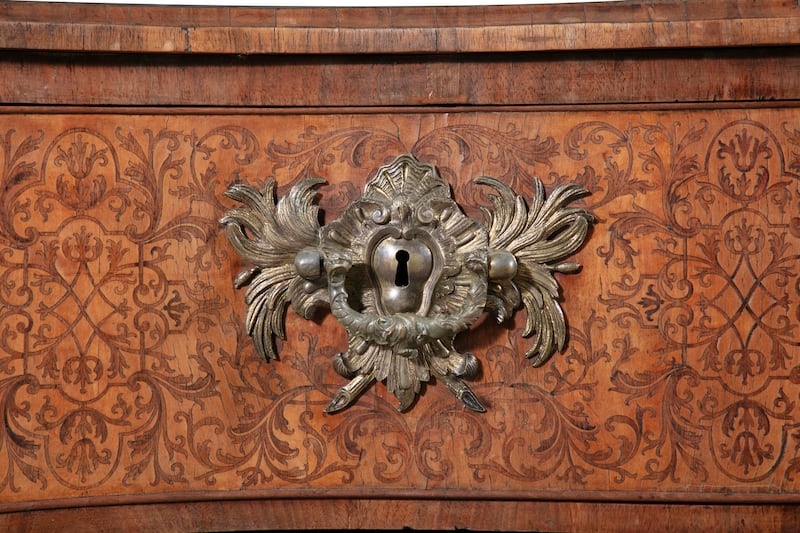
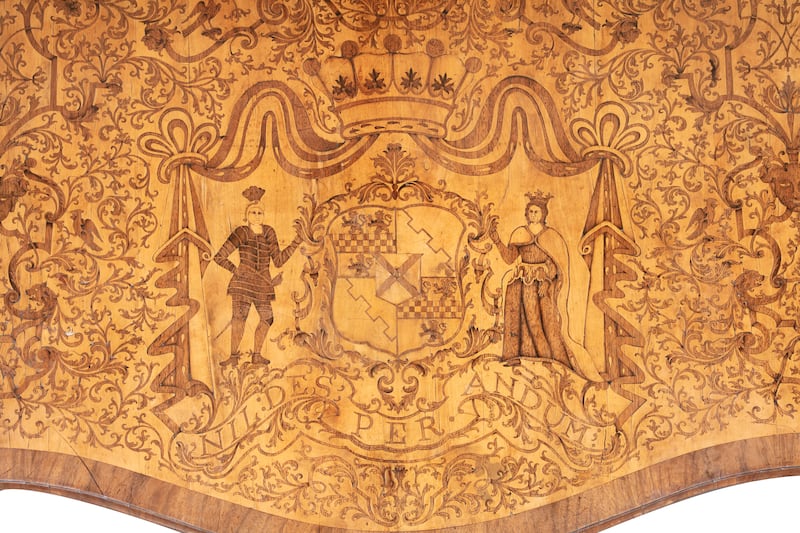
If you are heading to Drogheda to view the collection, do not miss the outstanding Blessington Commode (lot 395), estimated to achieve between €100,000 and €150,000. O’Halloran describes it as “perhaps the single most important piece of mid-18th century Irish furniture to come on the auction market in decades”.
In walnut, with delicate interlacing designs suggesting marine plant life known as seaweed marquetry, the serpentine chest is attributed to John Kirkhoffer, who was one of a family of German immigrants who worked in the Dublin furniture trade in the 18th and early 19th centuries. As Protestants, they had fled an area in Germany known as the Rhineland-Palatinate. It is estimated that 800 German families, comprising more than 3,000 people, were sent to Ireland at the time. Some 150 of these families settled in Rathkeale, Co Limerick, and became flax, hemp and cattle farmers.
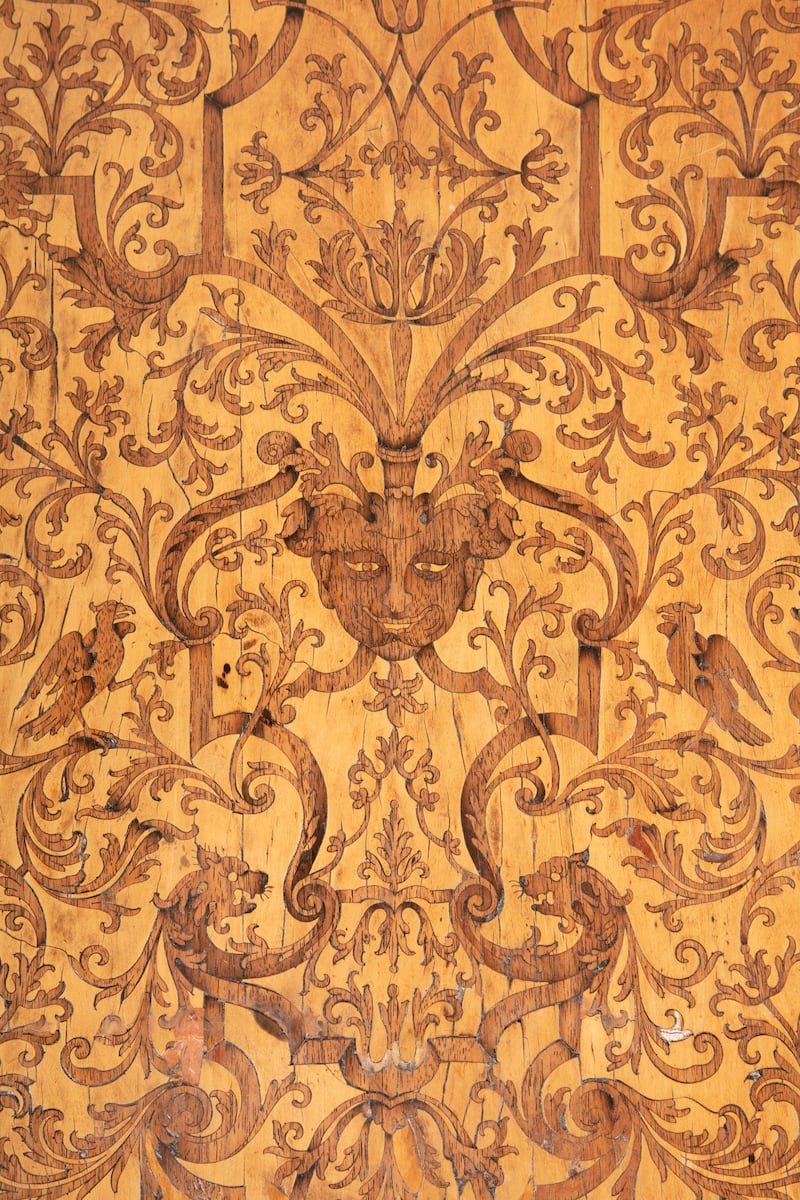
The attribution to Kirkhoffer was initially made by the Knight of Glin, the late Desmond Fitzgerald, and has now been directly linked to a signed piece which is part of the permanent collection of the Art Institute of Chicago. FitzGerald had worked in the furniture department at the Victoria and Albert Museum in London, where a piece known as “Dean Swift’s Cabinet” sparked his curiosity. While it did not have an inscription by Kirkhoffer, it did record a Dublin address that linked it to the piece in Chicago.
The Blessington Commode was made for William Stewart, 3rd Viscount Mountjoy and later 1st Earl of Blessington, who lived at 12 Henrietta Street, and also held a vast estate in Blessington, Co Wicklow. The commode is unique, and its history is lost, as Stewart had vacated Henrietta Street before his earldom was created, and his Blessington estate was burned in the 1798 rising.
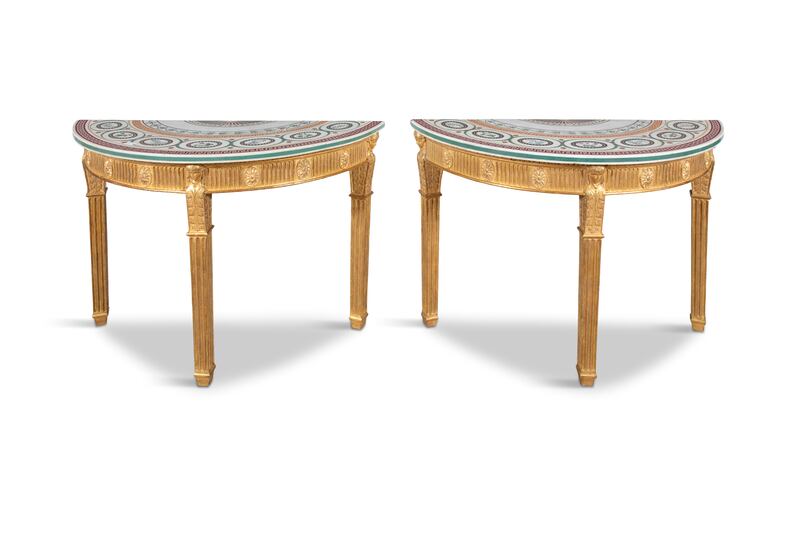
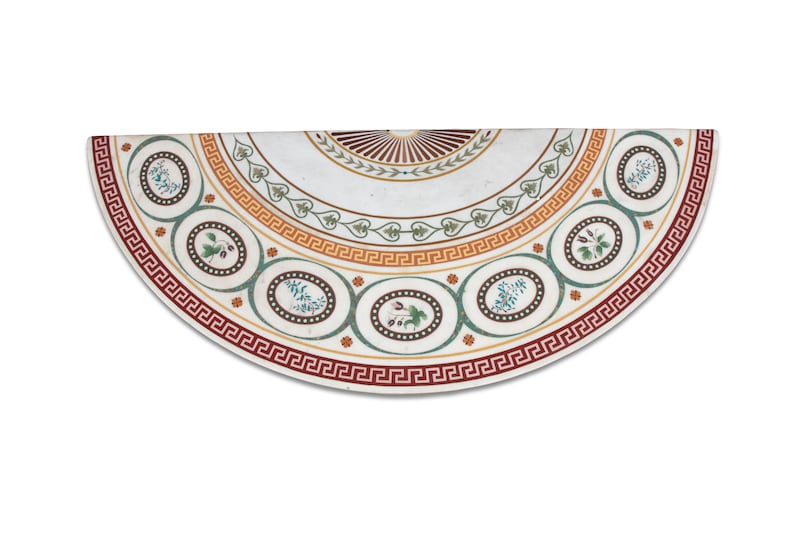
Another beautiful piece of craftsmanship is a pair of Irish D side tables with Bossi inlaid marble tops (lot 478). Little is known about Pietro Bossi, who, like Kirkhoffer, had emigrated to Dublin in the 1700s, but his legacy of craftsmanship is assured as much inlay work of the 19th century is still referred to as “Bossi work”, thus cementing his notoriety as one of the masters of Baroque fireplaces.
Best known for his marble techniques, the Italian specialised in stucco and scagliola, whereby he used a coloured paste inlay on white marble – which was then a more economical technique than using natural stone – designed to simulate coloured marble inlay. However, despite the technique being a less-costly method in the 1700s, today it is deemed to have great historical significance and prized among collectors. On giltwood bases with continuous fluted friezes, the exceptional pair is expected to achieve between €50,000 and €80,000.
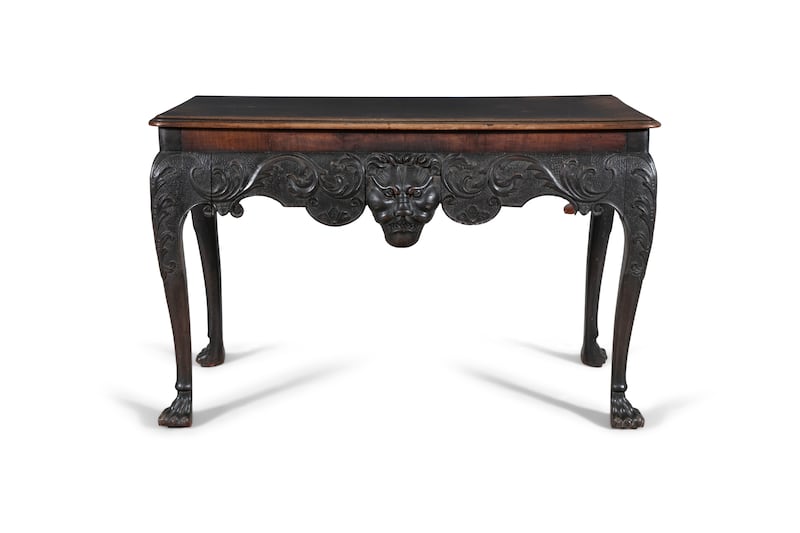
An alarming set of serrated teeth feature in the mask on an important Irish mahogany George III hall table (lot 384). Listed at €50,000 to €80,000, it has a similar profiles to the mythical “Green Man” mask of the Limerick Ballynagarde table.
Curiosities always feature in these sales, serving as a reminder of the past. Along with a George III inlaid mahogany chamber barrel organ by Astor & Co (lot 452, €3,000-€5,000) is a rare George III mahogany “exercise” chair from about 1810 (lot 40,€2,000-€3,000).
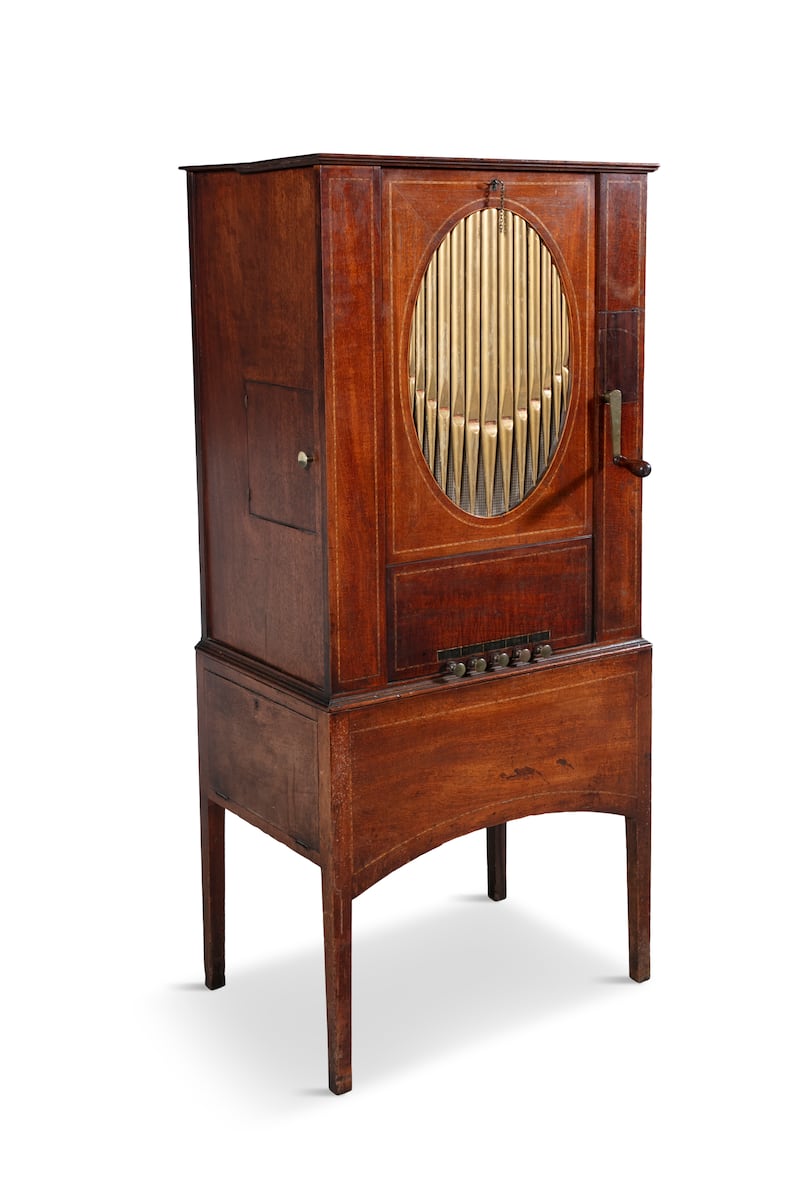
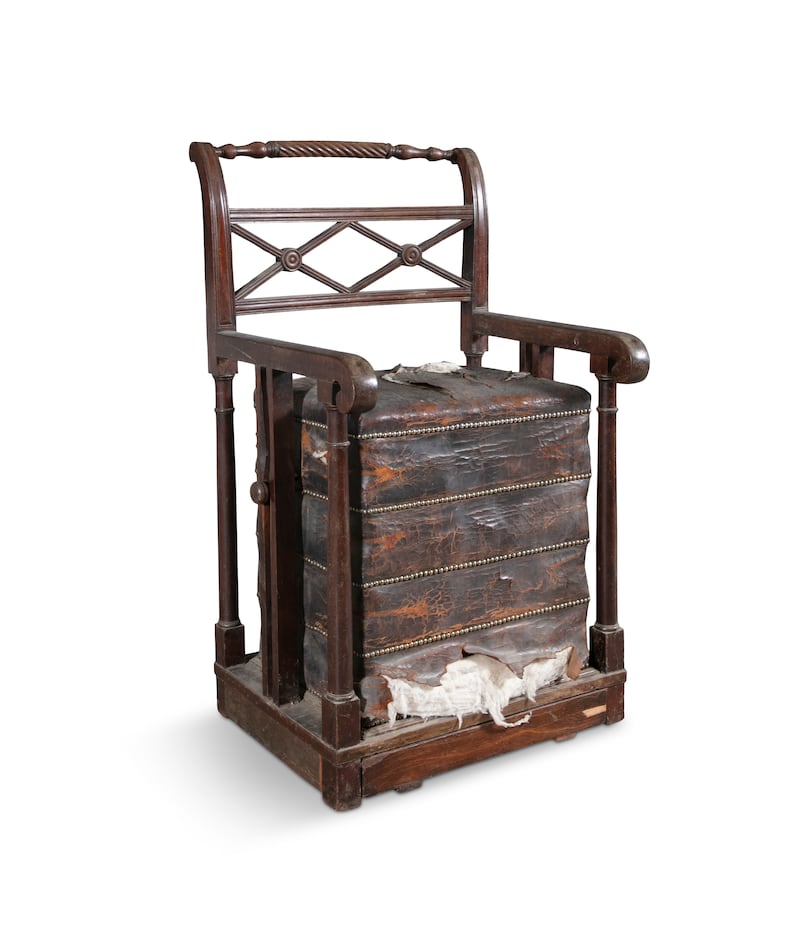
Sometimes called ‘chamber horses’ as the users bounced up and down, according to the Victoria and Albert Museum in London, these chairs were the early equivalent of the modern indoor exercise bicycle and were advertised from as early as 1740 in the London Daily Post. They were still used in 1803 as the museum notes that designer Thomas Sheraton, one of the “big three” English furniture makers of the 18th century, illustrated an example in his Cabinet Maker and Upholsterer’s Drawing Book.
From the 1700s, they were constructed using layers of board separated by metal coiled springs on a concertinaed seat – despite the fact that springs were not used for the upholstery of chairs until the 1830s. Fine art professional Helena Carlyle suggests in catalogue notes that, along with health benefits, “the chair also provided enjoyment as smaller versions were made for the entertainment of George III’s children”. adams.ie






